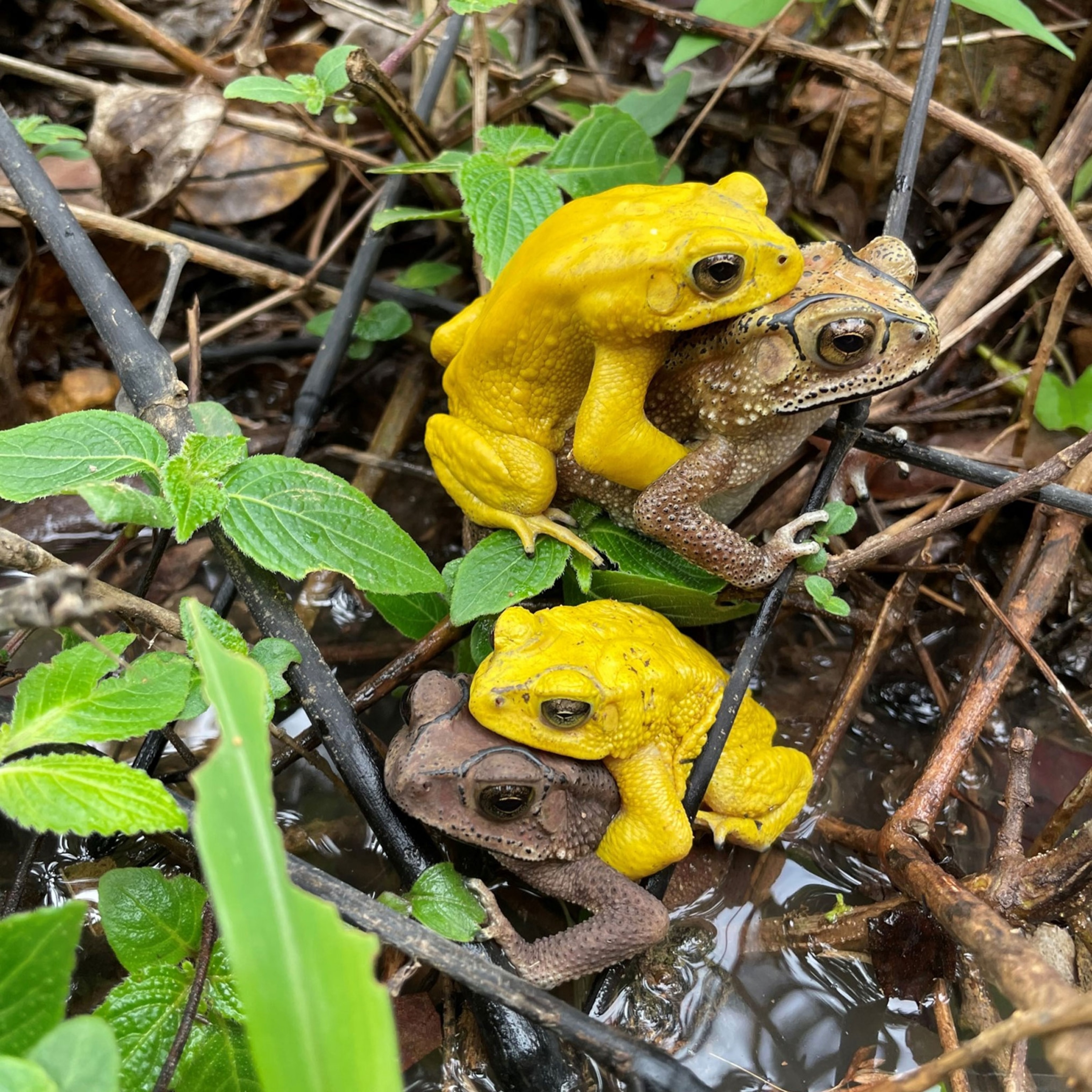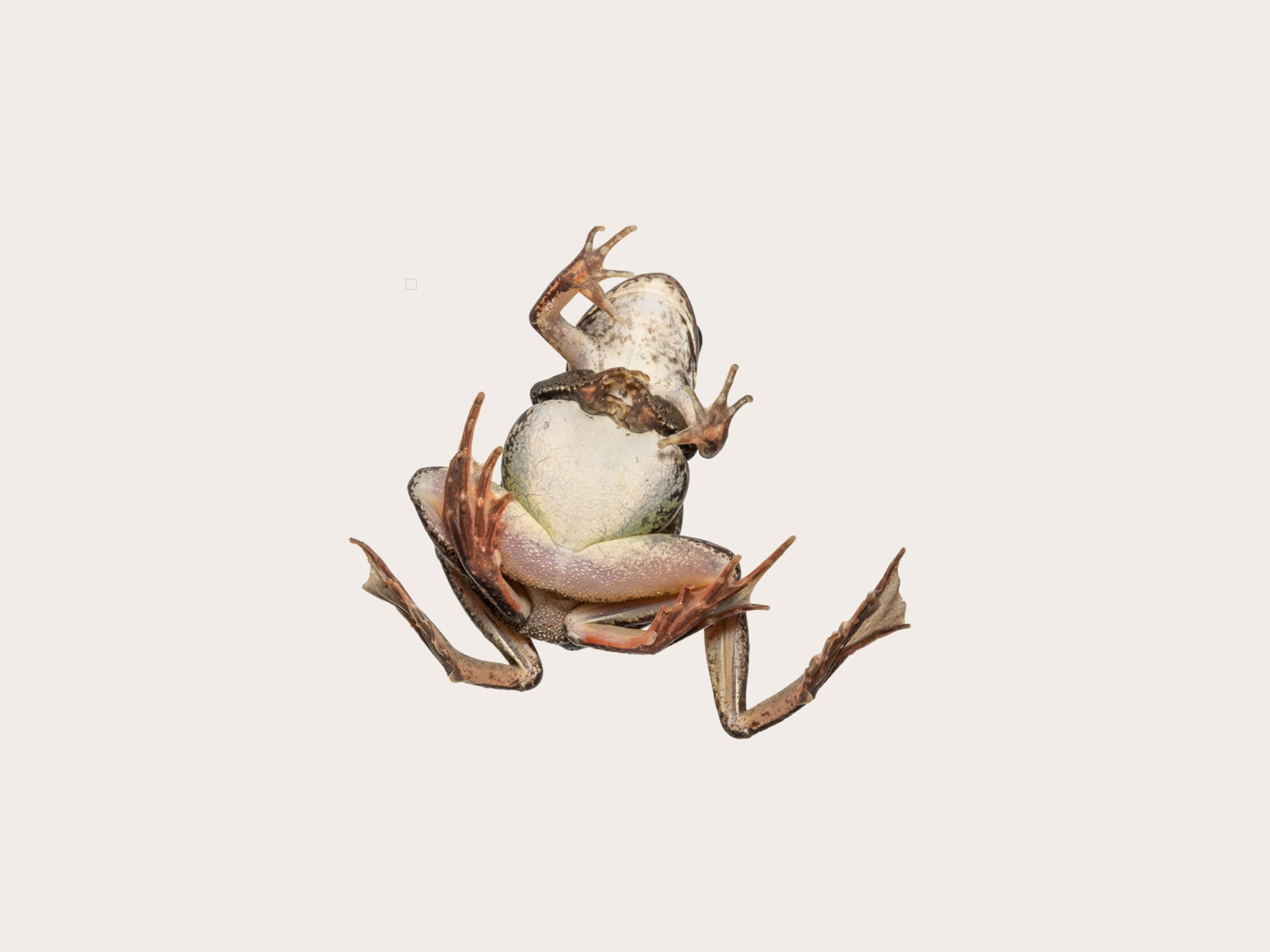Scientists working in Madagascar have found what may be the largest frog that ever lived.
The bad-tempered Beelzebufo, or "devil frog," also poses a big mystery—Why do its closest relatives live half a world away in South America?
Paleontologist David Krause of Stony Brook University in New York and his colleagues began unearthing the specimen in bits and pieces more than a decade ago.
Over the years a 75-piece puzzle emerged that was only recently put together by fossil-frog expert Susan Evans of University College London.
Evans, lead author of a new paper detailing the find, describes the 70-million-year-old frog as a rather intimidating animal the size of a beach ball, 16 inches (41 centimeters) high and weighing about 10 pounds (4.5 kilograms).
Attitude to Match
Like its closest modern-day relatives—a group of big-mouthed frogs in South America called ceratophyrines—the devil frog also probably had a very aggressive temperament.
"These ceratophyrines are really aggressive, ambush predators," Evans said.
"They are round with big mouths, and they will sit there and grab onto anything that walks past."
"They're sometimes called Pac-Man frogs," she added, "and even the little ones will go for you. It's a frog with attitude, even today.
"And at two or three times the size of the largest living ceratophyrines, Beelzebufo would have had quite a lot more attitude."
The animal sported a protective shield and powerful jaws that may have enabled it to kill hatchling dinosaurs.
"When we found out that that some of its relatives even have little horns on their heads, the 'devil frog from hell' seemed an even more appropriate name," Krause said.
The study describing the newfound frog appears in this week's issue of the Proceedings of the National Academy of Sciences.
Strange Relations
Beelzebufo's relation to frogs in South America adds another chapter to an ongoing debate about where Madagascar's unique flora and fauna originated.
Traditional models suggest that Madagascar separated from Africa some 160 million years ago during the breakup of the supercontinent Gondwana.
It's believed to have broken free from India some 88 million years ago and been isolated ever since.
But some scientists are challenging that model. They suggest that specimens like Beelzebufo provide proof of a later physical link between South America and Madagascar, most likely through a connection with Antarctica.
"The presence of a South American frog in Madagascar tends to support that theory," Evans, the London fossil-frog expert, said.
"It's not what you'd predict should be on Madagascar in terms of frogs. We have a frog that today is found only in South America and has never been recorded anywhere else in the world.
"Everybody thought they had evolved [only in] South America, and we've got one on Madagascar 70 million years ago."
Though Beelzebufo is a one-of-a-kind find, it may be just one of several recently uncovered fossils that lend plausibility to the theory.
"In dinosaurs, crocodiles, birds, and mammals we've been seeing over and over again a close evolutionary relationship between animals in Madagascar and animals in South America," said Kristi Curry Rogers, a paleontologist at Macalester College in Saint Paul.
"It's not what you'd expect given the huge distance between those places today," added Curry Rogers, who was not involved in the Beelzebufo study.
"Many of the animals that we've been able to find have their closest relatives in the Indian subcontinent, which is not a surprise because at that time [about 70 million years ago], it was right next door," Krause, of Stony Brook University, added.
"But other close relatives were in South America, and that was a surprise based on current reconstructions of what the world looked like at that time."
Intriguing Mystery
Laurie Godfrey is an anthropologist at the University of Massachusetts, Amherst, who is unaffiliated with the research.
She believes that the existence of a land connection between South America, Antarctica, and Madagascar sometime before the Late Cretaceous period—about 65 to 70 million years ago—seems increasingly evident.
But exactly when that connection was severed and how animals in each location subsequently evolved remains uncertain, she said.
"[It's] less clear whether that connection persisted through the Late Cretaceous, or whether Madagascar owes its South American affinities to a certain amount of evolutionary stasis within those groups, which certainly may have survived on both sides long after any land connection had been severed," she said.
More fossil finds could someday clear these muddied theoretical waters.
Unfortunately, specimens from the Cretaceous period have been rare—especially in mainland Africa, which Krause described as a "black hole" for fossils from this period.
Without fossils from this critical piece of the continental puzzle, it's hard for scientists to be certain about the distributions of ancient animals.
For now, Beelzebufo remains an intriguing mystery.
"Based on the modern and fossil distributions of this group of big frogs, it's not a pan-Gondwanan group," said Macalester's Curry Rogers.
"So far they haven't been recovered from the fossil record in India and Africa. They are in South America and Madagascar, and that's really interesting."








